Gypsum Ceiling Works in UAE
(12 products available)Gypsum ceiling works are the process of installation and finishing of ceilings using gypsum-based materials. It includes the attachment of gypsum boards on a supporting framework and then taping and filling the joints, with decorative finishes applied afterward. Skilled craftsmen use several techniques that can create smooth surfaces, intricate designs, and custom moldings. This ceiling design makes it easy to install lighting fixtures and HVAC systems, making it a great choice for many uses. Gypsum enables a wide range of designs, from flat simple ceilings to highly detailed coffered or vaulted. Such works are fundamental in new works and renovation projects meant to beautify and optimize interior space. If you are looking for gypsum ceiling works in UAE.TradersFind helps you connect with top manufacturers across UAE. They offer many types of gypsum ceilings for your business at reasonable prices. Our complete listings and product details help you find the best Gypsum Ceiling Work Company in UAE for your needs.
Gypsum ceiling works are the process of installation and finishing of ceilings using gypsum-based materials. It includes the attachment of gypsum boards on a supporting framework and then taping and filling the joints, with decorative finishes applied afterward. Skilled craftsmen use several techniques that can create smooth surfaces, intricate designs, and custom moldings.
This ceiling design makes it easy to install lighting fixtures and HVAC systems, making it a great choice for many uses. Gypsum enables a wide range of designs, from flat simple ceilings to highly detailed coffered or vaulted. Such works are fundamental in new works and renovation projects meant to beautify and optimize interior space.
If you are looking for gypsum ceiling works in UAE.TradersFind helps you connect with top manufacturers across UAE. They offer many types of gypsum ceilings for your business at reasonable prices. Our complete listings and product details help you find the best Gypsum Ceiling Work Company in UAE for your needs.
Gypsum ceiling works are the process of installation and finishing of ceilings using gypsum-based materials. It includes the attachment of gypsum boards on a supporting framework and then taping and filling the joints, with decorative finishes applied afterward. Skilled craftsmen use several techniques that can create smooth surfaces, intricate designs, and custom moldings.
This ceiling design makes it easy to install lighting fixtures and HVAC systems, making it a great choice for many uses. Gypsum enables a wide range of designs, from flat simple ceilings to highly detailed coffered or vaulted. Such works are fundamental in new works and renovation projects meant to beautify and optimize interior space.
If you are looking for gypsum ceiling works in UAE.TradersFind helps you connect with top manufacturers across UAE. They offer many types of gypsum ceilings for your business at reasonable prices. Our complete listings and product details help you find the best Gypsum Ceiling Work Company in UAE for your needs.
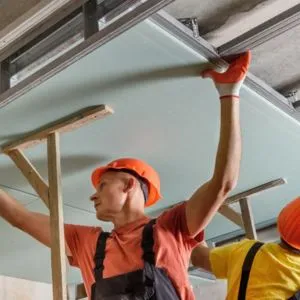
- Service Offered : Gypsum ceiling installation services
- Material Used : High-quality gypsum plasterboards
View more...
Royal Standard UAE
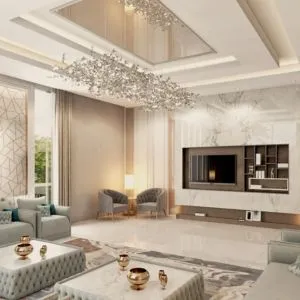
- Usage/Application : Interior aesthetic improvement
- Design Options : Various designs and colors
View more...
InterHome
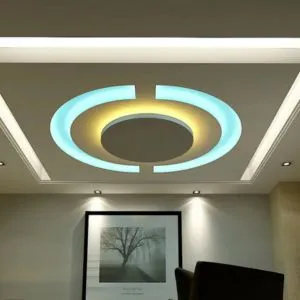
- Service Type : Gypsum & False Ceilings
- Design Options : Customizable styles available
View more...
One Stop Facilitiez
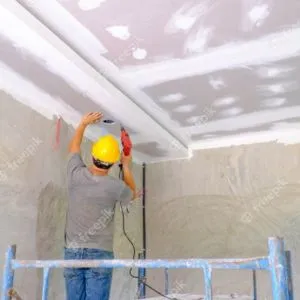
- Service Offerings : Gypsum ceiling and false ceiling works
- Installation Areas : Rooms, corridors, kitchens
View more...
Ritaj Technical Services LLC
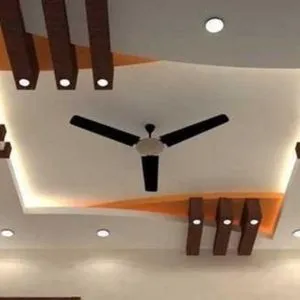
- Usage/Application : Residential and commercial
- Design Options : Various styles available
View more...
Design Desk Interiors
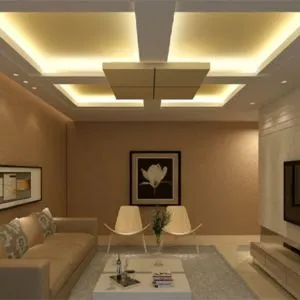
- Suitable for : Residential and commercial
- Material Used : High-quality gypsum boards
View more...
Wood World Decor
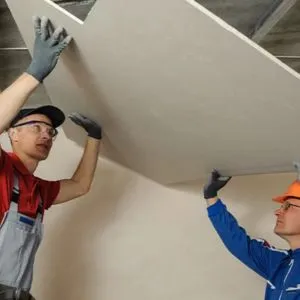
- Suspended Ceiling Works : Lightweight and sound-insulated
- Bulkhead Installation : For architectural detailing
View more...
Al Agha Group
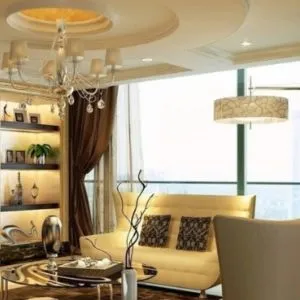
- Service Type : Gypsum Ceiling Installations
- Ceiling Types : Drywall, Gyproc, Hotel Ceilings
View more...
The Reliable Technical Services
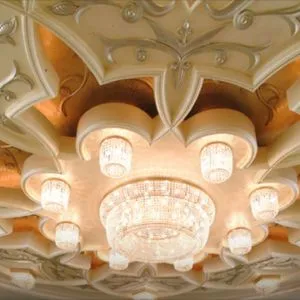
- Product Type : Cast Gypsum, GRG
- Advantages : Fire-resistant
View more...
Golden Arch Decor LLC
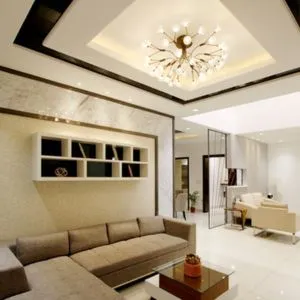
- Material Type : Gypsum Board/Plasterboard
- Installation Method : Suspended Ceiling
View more...
Home Fixer Dubai
An easy way to post your sourcing requests and get quotes.
- One request, multiple quotes
- Verified suppliers matching
- Quotes comparison and sample request
Gypsum Ceiling Works in UAE
Gypsum ceiling work in UAE, as followed, is largely very hard-wearing, affordable, and also aesthetically pleasing. Gypsum board or drywall is a substitute that frequently substitutes false ceilings in homes, offices, and buildings that are commercial. It offers high-quality insulation, fire resistance, and soundproofing, which are beneficial to the climate and nature of the structures to be built in UAE.
Skilled contractors provide customized designs that might involve modern, decorative, and recessed lighting options to add to the look of the space. You can easily set up and also maintain gypsum ceilings according to your choice of design.
Types of Gypsum Ceiling Works in UAE
Different kinds of gypsum ceiling installations include smooth ceilings, suspended ceilings, ornamental patterns, paneled ceilings, and ceiling panels. These choices provide a range of aesthetic flexibility and functional advantages for different areas. Below mentioned are the types of gypsum ceiling works in UAE:
Plain Gypsum Ceilings
Plain gypsum ceilings feature a smooth, flat surface. Builders commonly use gypsum boards, plaster sheets reinforced with cardboard, to construct plain ceilings. Workers attach these boards to a metal frame, then finish with joint compound and paint.
Gypsum false ceilings
Gypsum false ceilings serve as secondary ceilings suspended below the main structural ceiling. Gypsum is a construction material that is lightweight and pliable. Office ceiling designs are popular in commercial spaces, like offices. They provide benefits such as improved aesthetics, better acoustics, and easy access to wiring, plumbing, and utilities.
Decorative Gypsum Ceilings
Decorative Gypsum Ceilings provide a range of aesthetic choices to improve the look of a room as a type of ceiling finish. Decorative moldings, unlike plain ones, serve to enhance visual appeal and establish a particular atmosphere.
Coffered Gypsum Ceilings
Coffered gypsum ceilings are decorative gypsum ceiling moldings with recessed panels forming a grid-like pattern. Usually constructed from gypsum boards, they can bring a sense of refinement and class to any space. Coffered ceilings can enhance acoustics by absorbing sound as well.
Gypsum ceiling tiles
Gypsum ceiling tiles consist of gypsum plaster overlaid with one side made of PVC film and the other side metal foil. Their most prominent features are being light in weight, easy to maintain, and a great appearance.
Manufacturers make pre-built panels for gypsum ceiling tiles from gypsum plaster and cardboard. One can texture these tiles according to their preference. These tiles are available in different sizes and shapes.
Materials Needed for Gypsum Ceiling Works
The necessary materials for gypsum ceiling installations consist of gypsum boards, metal frames, screws, joint compound, tape, and finishing supplies such as paint. These elements guarantee a durable and visually appealing ceiling setup.
Gypsum Boards
Gypsum boards are noted for their strong endurance and excellent surface. These boards not only offer an attractive appearance but also help extend the lifespan of the ceiling, guaranteeing it stays in excellent condition for many years.
Metal Framework
Metal structures guarantee the ceiling's structural stability. These structures are designed to last long, offering the needed support for the gypsum and ceiling works and extra fixtures. This strong base guarantees a ceiling that is both attractive and trustworthy.
Suspensions
High-quality suspensions for securely hanging the gypsum boards. These suspensions are created to ensure the highest level of stability, avoiding any possibility of sagging or fluctuation as time goes by. You can rely on the expertise of gypsum false ceiling installation techniques to ensure your ceiling gypsum work stays completely level.
Measuring Tools
Advanced measurement equipment for precise measurements. Accurate measurements guarantee each gypsum board is precisely cut to the necessary size, reducing material waste and cutting costs for you. This is all a part of our commitment to being efficient and excellent.
Finishing Materials
The selection of finishing materials is done with precision to create a smooth and refined appearance. Recognize that the final details are what enhance a gypsum ceiling. Choosing the right materials not only achieves a perfect look but also makes seams and corners nearly invisible, resulting in a polished and refined finish.
Paints and Sealants
Paints and sealants of high quality for maintaining or improving the look of your gypsum ceiling. You can choose from a wide variety of paints to customize your ceiling and match your decor or branding. You also use sealants that create a protective barrier for your gypsum ceiling, guarding it against moisture and environmental elements to keep it looking beautiful over time.
Installation Process of Gypsum Ceiling Works in UAE
The procedure for installing gypsum ceiling works in UAE includes measuring the space, setting up a metal framework, connecting gypsum boards, and completing joints. This guarantees a safe and visually appealing ceiling that complies with safety regulations. The steps for installation are mentioned below in detail.
Preparation
Take out any current overhead lights or fans that are installed on the ceiling. Make sure the ceiling is clear of dirt and debris for a smooth surface for the new ceiling. Decide where to place the framing grid on the ceiling. Consider the ceiling height you want and any structural limits.
Framing
Securely attach the metal framing grid, which includes main runners and cross-treads, to the current ceiling structure. Employ proper fasteners like gypsum screw or nails to guarantee the framing remains secure and can uphold the weight of the gypsum boards. Ensure proper spacing between the framing members to prevent sagging and provide sufficient support.
Gypsum Board Installation
Trim the gypsum boards to the preferred size and shape with either a utility knife or circular saw. Securely fasten and align the gypsum boards to the framing grid with screws. Combine the board edges using joint compound and tape to achieve a smooth, continuous surface. To achieve thicker ceilings, think about incorporating several layers of gypsum boards.
Joint Finishing
Use multiple layers of joint compound on the joints and any nail or screw holes, sanding each layer to create a flat surface. Apply the joint compound evenly and avoid air pockets by using a joint knife. Put a thin layer of joint compound on the entire ceiling to create a consistent look.
Finishing
Sanding the final coat of joint compound ensures a smooth and even finish. Apply a proper primer to the ceiling before painting to improve paint adherence and create an even surface. Apply several layers of paint to achieve a uniform finish on the ceiling in the chosen color or texture.
Final Touches
Securely reinstall the ceiling fixtures, including lights and fans. When you choose a mounting method, consider the weight of the fixtures and whether the ceiling can support that weight for safety and stability.
Gypsum Ceiling Works for Different Sectors in UAE
Gypsum ceiling installations are crucial in UAE for a range of sectors like residential, commercial, and industrial. Every industry uses gypsum ceilings for their aesthetic and functional advantages. The points below offer thorough explanations of these uses.
Residential Sector
Gypsum ceilings in UAE residences combine traditional Arabic patterns with contemporary aesthetics. Designers commonly use elaborate moldings and cornices, with geometric patterns or calligraphy being popular choices. Ceilings with multiple levels and LED lights help smaller apartments feel more spacious. Tall apartment buildings highly value soundproof characteristics for privacy.
Hospitality Sector
Luxury hotels in UAE feature opulent gypsum ceiling designs. Large entrances commonly have elaborate domed roofs adorned with detailed medallions and gold leaf decorations. The guest rooms feature modern designs with built-in smart lighting systems.
People use acoustic gypsum ceilings to control sound in ballrooms and conference halls. In spa areas, designers choose moisture-resistant gypsum with soothing textures and soft lighting to create a peaceful ambiance.
Commercial office Spaces
In UAE, modern office buildings often choose gypsum ceilings for a sleek, polished appearance. Suspended ceiling systems frequently incorporate HVAC and fire safety features.
Acoustic gypsum ceilings contribute to the creation of peaceful workspaces within open-plan offices. Adaptable, flexible layouts make it simple to change the arrangement of rooms. Designers commonly integrate energy-saving lighting options into the ceiling layout.
Retail industry
Gypsum ceilings are utilized by malls and boutiques in UAE to establish unique brand atmospheres. High-end retailers commonly showcase artistic, sculptural ceiling designs as central features.
Shopping malls use gypsum to design themed areas and directional signage. Advanced lighting systems illuminate products and set the mood. In high foot traffic areas, durability is crucial. Gypsum products that are easy to clean and maintain are the preferred choice.
Government Buildings
UAE governmental buildings frequently have gypsum ceilings that showcase national pride and heritage. Grand entrance halls might display elaborate Islamic geometric designs.
Conference rooms use acoustic gypsum to provide privacy and control sound. Ceiling designs incorporate hidden camera systems to seamlessly enhance security features. Durability and minimal upkeep are important factors for extended use.
Cultural and Religious Centers
Mosques and cultural centers in UAE utilize gypsum ceilings to design impressive environments. Elaborately designed domes and arches frequently showcase calligraphy and traditional patterns. Sound considerations are essential in prayer halls. Museums utilize gypsum ceilings to establish neutral backdrops for exhibits, while including adaptable lighting for various displays.
Industrial Sector
In industrial establishments in UAE, gypsum ceilings prioritize safety. Construction teams commonly use fireproof gypsum boards to comply with stringent safety rules. Acoustic panels decrease noise levels in manufacturing spaces.
High-tech industries use specialized gypsum ceilings in clean rooms to maintain controlled environments. Maintaining hygiene standards in food processing plants requires surfaces that are easy to clean.
Environmental Considerations in Gypsum Ceiling Works
Environmental factors in gypsum ceiling projects involve the utilization of recycled materials, minimizing waste, and maintaining adequate ventilation for improved indoor air quality. Furthermore, gypsum's inherent characteristics play a part in promoting energy conservation and eco-friendliness in building initiatives. Listed below are the environmental considerations in detail:
Sustainability of Gypsum Materials
Gypsum is a natural mineral used for numerous applications in buildings, especially its ceilings. Among the several eco-friendly features of gypsum, its intrinsic recyclability stands out. Indeed, recycling gypsum reduces the environmental impact but also reduces the demand for fresh inputs.
The production of gypsum is also more energy-efficient than most other building materials. In general, making gypsum boards generally requires less energy and, therefore, less carbon footprint. The mineral only needs to be heated to remove moisture, using significantly less energy than the production of cement and other common building materials. Gypsum ceiling repairs contribute to sustainability by reducing waste and promoting material reuse. Modern technology has also enhanced the extraction and processing of gypsum, further improving its environmental profile.
Certification and Green Building Regulations
UAE aims to make its construction sector more sustainable, aligning with global standards like LEED (Leadership in Energy and Environmental Design) certification. Gypsum and ceiling works contribute to optimizing energy performance and enhancing indoor environmental quality by achieving LEED points through several sustainability goals:
The Abu Dhabi Urban Planning Council and Dubai Municipality enforce UAE Green Building Regulations, requiring sustainable building practices. These rules promote green materials like gypsum, helping meet green building standards. Gypsum ceilings support sustainability by improving resource efficiency and reducing environmental impact.
Energy Efficiency
The thermal insulation characteristics of gypsum ceilings are also a very important part of the sustainability aspect. The energy needed to cool a building in UAE's very hot climate can be phenomenal. Gypsum ceiling maintenance greatly prevents overheating inside buildings and thereby reduces the necessity for air-conditioning systems.
Improving the thermal efficiency of affordable gypsum ceilings not only minimizes energy consumption but also directly reduces carbon emissions in buildings. Energy savings lead to cost savings for building owners and occupants. This creates a strong case for incorporating energy efficiency into new construction and renovation projects. Moreover, energy-efficient buildings are likely to attract environmentally conscious tenants and buyers, significantly increasing their market value.
Waste management and recycling
It is, therefore no surprise that construction is the industry generating the most waste. Gypsum waste is common in most construction sites. The construction sector in UAE is currently adopting more recycling-based waste management methods to minimize landfill contributions.
These facilities crush and process used gypsum boards, making them suitable for manufacturing new gypsum boards. From encouraging recycling opportunities, stakeholders in the construction sector actively get gypsum materials circulated back into circulation and make productive use of all resources.
Cost Analysis of Gypsum Ceiling Works in UAE
When looking into gypsum ceiling works in UAE, several cost factors can affect the final estimate. Here are some of the key elements to consider.
• Material Costs: The gypsum boards have varied prices, depending on their type. You could find standard, moisture-resistant, and fire-rated among them.
• Accessories: Accessories would include metal framing; joint compound, and finishing materials.
• Labor Cost: Installation demands skilled labor. Depends upon the design complexity and the number of experts needed.
• Complexity of Design: A simple ceiling design is generally more affordable than a complex one that includes custom gypsum ceilings, curves, or patterns. Extra materials and labor will inflate costs significantly.
• Project Scale: Economies of scale can be achieved using larger projects, with regards to the cost per square meter. Conversely, small projects can incur higher labor and material charges because of a minimum rate charge.
• Location: Rates will vary based on location within UAE. Labor and materials may be more expensive in cities such as Dubai and Abu Dhabi compared to smaller cities.
• Finishing Options: The finish paint, texture, or other treatments are chosen, which also defines the cost.
• Add More Features: These include lighting fixtures, HVAC systems, or even soundproofing features, which add cost. The intricacy of the installation might involve extra labor charges.
Emerging Trends in Gypsum Ceiling Works in UAE
Gypsum ceiling works have come a long way from basic white grids and tiles. Today, they are an integral interior design element that can completely transform the look and feel of a space. Modern ceiling designs are no longer flat and forgettable. They push boundaries, embrace bold statements, and integrate technology like never before.
In 2024, exciting trends are emerging, promising to redefine the role of the ceiling in interior design. Ceiling design trends for the coming year, and discover how gypsum and ceiling work can help you bring these ideas to life.
3D Printed Gypsum Elements
Innovations in 3D printing technology are transforming how designers create gypsum ceilings. This new technology enables the design of detailed, personalized ceiling features with unparalleled accuracy and intricacy. Architects and designers can create bold, natural shapes and complex designs that were previously challenging to achieve. This technology increases creative options and decreases waste and installation time by allowing for the precise printing of intricate pieces.
Bolder Geometric Shapes and Patterns
The days of dull square tiles are now in the past. In 2024, anticipate ceilings featuring striking triangular, hexagonal, and circular patterns. Using these geometric shapes and patterns creatively adds architectural appeal and visual excitement.
The different angles and intersections give the ceiling depth and make it the center of attention. Utilizing various dimensions and angles of the identical form can enhance the dynamism of the design.
Eco-Friendly Gypsum Products
The focus on sustainability is leading to the development of eco-friendly gypsum products through innovation. Companies are creating gypsum boards by utilizing recycled materials, such as waste gypsum and paper from consumers. Some are testing out bio-based binders and fillers made from agricultural waste. These environmentally friendly options not only lower the carbon footprint of manufacturing but also enhance indoor air quality.
Performance Enhancement
Advanced gypsum board designs now offer superior sound-absorbing properties because of a focus on acoustic comfort in buildings. These new products feature micro-perforations, specially designed chambers, or innovative core materials that significantly improve sound absorption and reduction. Certain designs utilize phase-change materials to adjust to various acoustic requirements.
Digital Design and Fabrication
Building Information Modeling (BIM) and advanced digital design tools are transforming how to design and install gypsum ceilings. These technologies enable the creation of 3D models of complex ceiling systems with other building elements like HVAC. Increasingly, digital fabrication methods, such as CNC cutting and robotic assembly, accurately bring intricate designs to life. This pattern enhances collaboration between various industries, minimizing mistakes, and enabling the implementation of more ambitious and accurately executed plans.
Lightweight High-Strength Formulations
New gypsum formulations are creating boards that provide a perfect mix of lighter weight and higher strength. These advanced materials use fibers or new chemical additives to improve durability while keeping the same or decreasing weight. The reduced weight allows for easier handling and installation, which could lead to lower labor costs and quicker installation.
Find the best Gypsum Ceiling Work Company in UAE on TradersFind
TradersFind is a reliable platform for those who are looking for gypsum ceiling works in UAE. You can find different verified suppliers across UAE. You can get the complete details such as contact details, location, or WhatsApp number.
Through that, you can get in touch with gypsum ceiling work company in UAE. In short, TradersFind is the best place to easily connect with the top manufacturers in UAE.
Frequently Asked Questions (FAQs)
Q1: What are the different designs of gypsum ceiling works?
A1: Gypsum ceiling works have flexible design. Some of the common designs are flat ceilings, drop ceilings, coffered ceilings, and other complex designs that involve curves and levels. Flexibility in design can be an exercise to satisfy many building styles for a space.
Q2: What are the differences between gypsum ceiling work and traditional methods of construction?
A2: Generally, gypsum ceiling works are quicker to set up as compared to traditional methods such as plaster. Gypsum board is a material that provides smoother finishes and comes lighter than other materials
Q3: What tools and materials are needed for gypsum ceiling works?
A3: Common tools and materials: gypsum boards, wooden framing, screws, joint tape, joint compound, a drywall saw, a T-square, a level, and a drill. A professional has special tools with specific installation equipment.
Q4: Do gypsum ceiling works require professional assistance?
A4: Some DIY enthusiasts can manage small installations, but hire a professional for larger or more complex projects. Professionals know how to install correctly, follow building codes, and ensure a high-quality finish. This reduces the potential for later problems.
Q5: What should be considered when choosing a contractor to perform gypsum ceiling works?
A5: The key selection criteria for a contractor are experience, a portfolio of previous projects completed, customer reviews, and adherence to local regulations. Also, ask if they offer any guarantees or warranties on their workmanship.
Copyright © 2024 Interconnect Marketing Management L.L.C All rights reserved.















